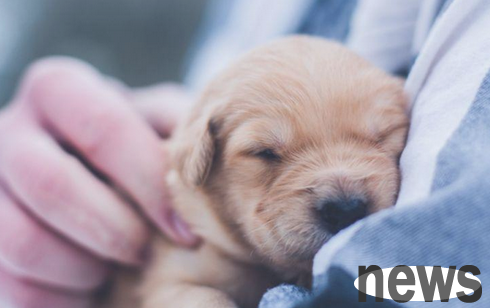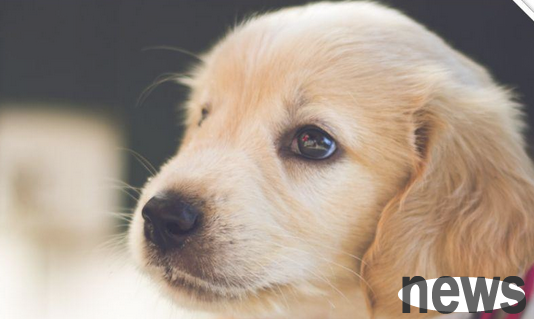For beginners, raising a puppy will encounter many doubts. For example, feeding, epidemic prevention, and training are all over the place where new parents who "pet dogs" will be overwhelmed. So what is the first "stumbling block"...
For beginners, raising a puppy will encounter many doubts. For example, feeding, epidemic prevention, and training are all over the place where new parents who "pet dogs" will be overwhelmed.
So what is the first "stumbling block" to touch a puppy? It's just touching!
Imagine that the scene when everyone meets it for the first time is feeding, injection, not! If you see its watery big eyes, looking at you with a little doubt, unfamiliar, and curious eyes, is it just to reach out and touch its fluffy little head?
Soft and proactive care can improve the happiness of being by the dog and reduce the psychological fear of the puppy.
Therefore, the first lesson that beginners should grasp is called caressing. As we all know, touching can show a situation that relieves stress, and touching can also make the puppy more and more excited. For most puppies, touching the human body and the temptation of food can make the puppies answer you.

1. How many puppies must just start stroking training?
Puppies must carry out touching training every day since birth. Puppies that have undergone touching training can quickly integrate into and solve work pressure. Therefore, if you want to get a good-tempered dog, you must give it regular touches at least twice a day.
From the first time you come into contact with a new puppy, the initial caress training can allow the main members of the family to take turns. If the pet dog does not cooperate with your caress, you can use toys to attract his focus.
As time changes, touch training should develop to all parts of the human body. For example, gentle touching the face and ears can help your puppy integrate into and enjoy different touches in the human body, and it is also conducive to improving your emotions with the puppy. Touching the front paws can help the puppy prepare for trimming fingernails in advance. Felt training can greatly alleviate anxiety caused by brushing teeth, rinsing your mouth, taking a bath, cleaning your ears, applying medicine, driving belts and collars.
Puppies that have completed training should be in a state of releasing stress and being quiet, and are not suitable for too much excitement. Feeling is to create an intimate and intimate interaction between you and the dog without too much consideration.
With love, I think it can be felt.
2. When is the best time to touch a puppy?
How to carry out
stroke?
Font training is best to choose a time when a puppy has a relatively peaceful mentality. For example, when you wake up from a nap soon, but please do not start the caress training immediately. Make the puppy excited and have fun with you. At this time, you can put the puppy on your legs, stroke it all over, show your snacks and praise it.
The first training time must be short-term. The first long-term training will make the puppy have a resistance mentality, and gradually increasing the training time will prevent it from being unpleasant.

The main members of the family should participate in the caressing training of puppies. The children can carry out the training with their parents. The puppies will allow you to get close to you soon. If the puppy has all the reluctance in the subsequent training, you need to do repeated training until the puppy can perform stroking training without resisting and significantly improves the stroking time. If you cannot persist in training, the puppy will never allow you to stroking.
3. Can touching prevent puppies from having bad habits?
Raising a pet dog will bring a lot of happiness to our daily life, and naturally there will be some troubles. This trouble comes from some bad habits of the puppy.
According to research, stroking is a simulation of the personal behavior of female dogs licking and sucking puppies. Foot training can improve mutual trust and prevent bad habits that some puppies will have.
4. Personal behavior and feeding training for dogs
The innate growth habit of dogs is to protect their ingredients from being taken away, but you must let the puppy figure out that you will definitely not bring their ingredients, so that the puppy can allow its ingredients and toys to be touched by people.
When the puppy is eating, gently stretches out the bowl and returns it; when it is already eating, squats down to eat or pats his head to soothe him. This method allows the puppy to endure invasion and influence.
If you add delicious snacks, feed the puppies and even welcome them at any time after a period of time; and if dogs and dogs bark during the training process, you should seek professional guidance and temporarily terminate the current personal behavior. If the puppies compete with other dogs in the family, the puppies should be fed or fed independently.
5. Toy training and solution
You can try to slowly remove the toys of your puppy. First put the door handle on the toy and tell the puppy to "take" you from its mouth, then say "thank you" or other fixed verbs. Repeating this training daily task at several addresses can enhance the actual training effect.
If the puppy likes toys, you can also play the pursuit and exploration game with it, and draw up a timetable in advance to play on time, instead of letting the puppy wait in time during the game, the toys can be used as a reward to teach instructions.
Sometimes it may be that puppies do love toys or ingredients, so you refuse to take them away. You can exchange other items, such as delicious snacks. If the puppies maintain this item, you can properly guide the puppies to another area and prevent them from using that item as training later.
6. What should I do if the puppy resists training?
1. When the puppy is in a happy mood, you can just start this kind of training. The first work experience rule is called "learning to make money" method, using emotional communication and touching the human body as a reward. If you give instructions for "sitting" or "lying down", the puppy will learn training to understand this word, and then get the reward of "Yu Fu" after performing the posture.. Another way of training is when the puppy has played with its favorite toys, please issue instructions and take away the toys while ensuring safety, and use caress as a reward.
2. Ensure that puppies enjoy touching and pampering. If you are training a puppy, if the puppy is in a happy mood, it will generally be very good to train. When the puppy shows resistance, it means it is already very bored.
3. Slowly respond, the puppy goes from being touched by the head or rubbing its stomach, and then proceeds to other positions in the human body, such as the mouth, head and neck, back, front paws and tail.
4. If a puppy experiences personal behavior that conflicts at any time, please terminate the training and wait until it is calm before carrying out the training. Wearing a mouth cover for the puppy under the premise of safety can ensure that the training is carried out again.
5. If you encounter obstacles in the previous stage, you can try to use ingredients or favorite toys to diversify the concentration of your puppies.
6. The final training effect is that the puppy can put the door handle on its body or abdominal cavity to assist it in brushing its teeth, rinsing its mouth or tidying its hair, trimming its fingernails, and even measuring its body temperature. The entire training process must be carried out continuously to ensure successful training results.
7. Evaluate the training of puppies according to language instructions. For example, if you stand up, you can say the instruction to "stand up". After the instruction is made, the puppy can receive a favorite reward. When issuing a "sitting" instruction, you can release mild working pressure on its head, neck or back. When the puppy stands up, it will automatically cancel the "sitting" instruction.